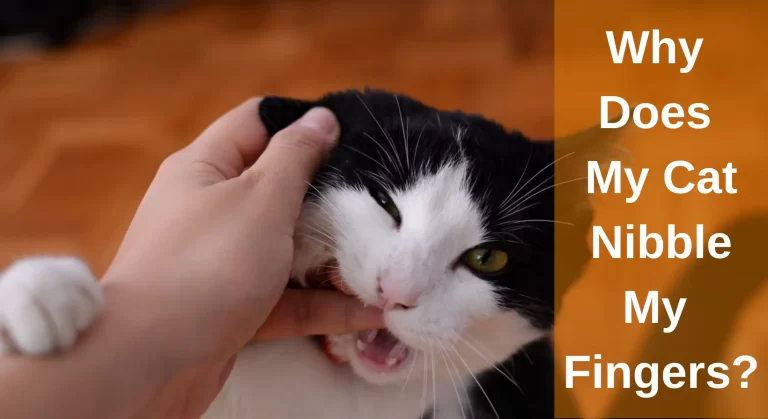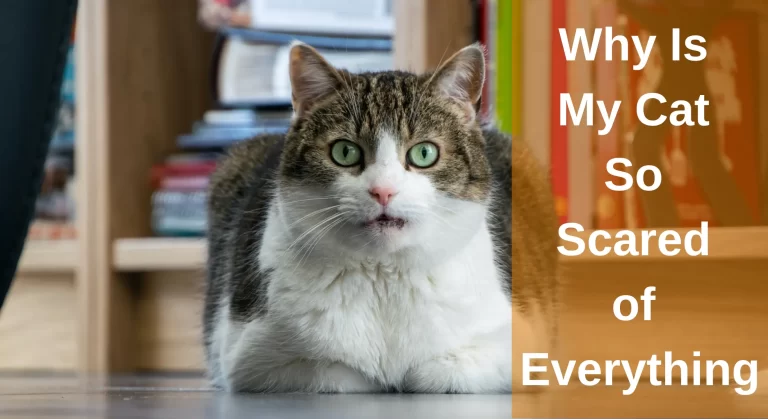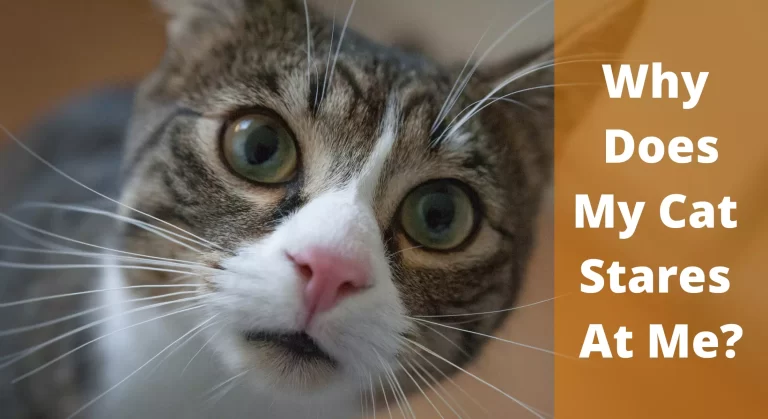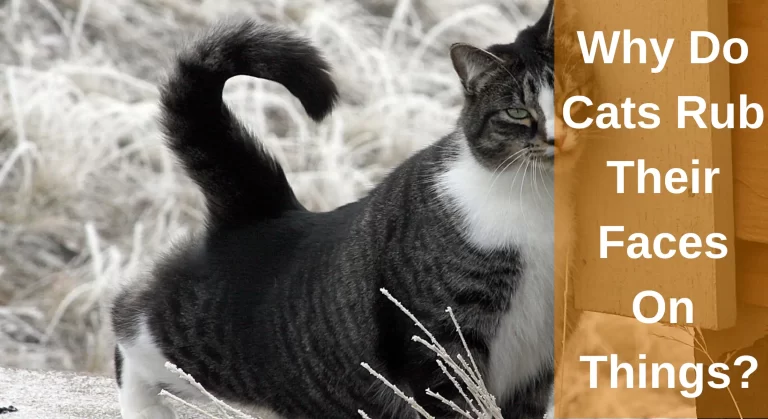Why Cat Peed In The Air Vent? [Answered]
Even if you provide a comfortable place for your cat, the possibility that they’ll wander all around the home and become obsessed with unexpected items. Maybe you’ve observed that your cat likes to stay around the ventilation ducts and may pee inside them. Like most owners, you might be curious to know why cats do this. Why Cat Peed In The Air Vent?
There are a few reasons why your cat might have peed in the air vent. Cats sometimes do this to mark their territory, which is something many animals instinctively do. Cats might also like the warmth of vents. Animals often mark different places to show they’re in control. Additionally, this behavior could show that your cat is stressed due to changes around or might have health problems.
Now you’re aware of why cats pee inside the air vent, you might be thinking about how to clean the vent.
Don’t worry, continue reading this article, to know the answers to all these queries. In this article, we delve into the quirky world of cat behavior, understand why cats sometimes choose unorthodox places to relieve themselves, and How can prevent it from occurring. How can the odor that pees leave behind be eliminated? Why do cats like air vents? provide practical solutions for dealing with a cat that has peed in the air vent.
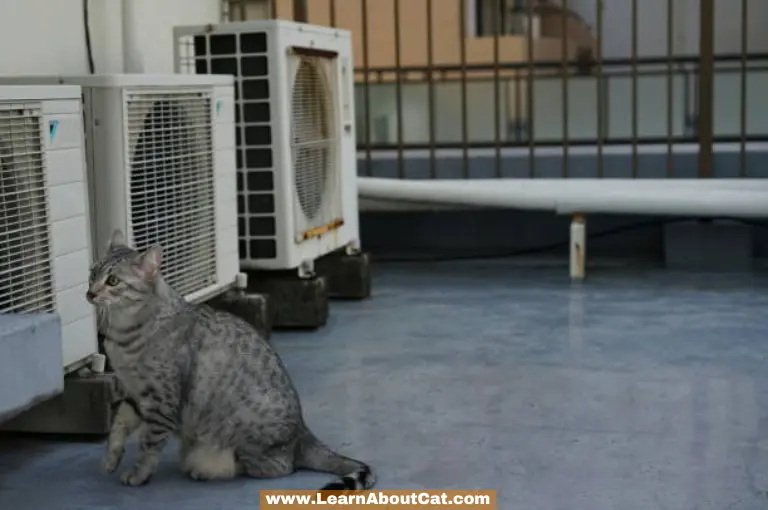
Why Is My Cat Obsessed With Vents?
Cats enjoy air vents because of the following reasons:
Warmth and Comfort
Cats are known for seeking out warm and cozy spots, which harks back to their wild ancestors’ need to conserve energy. Vents emit a gentle, warm airflow, creating a spot that mimics the sunlit warmth they might find in nature.
Your cat’s preference for vents could stem from this innate instinct to seek comfort and conserve energy. If your cat is obsessed with vents, it may be a sign that they are not getting enough warmth from other sources, such as a heated bed or blanket.
Confined Security
Cats are both predators and prey in the wild. Seeking out enclosed spaces helps them feel safe and secure. Vents provide a snug and confined environment that satisfies your cat’s natural inclination for safety and seclusion.
If your cat is feeling stressed or anxious, it may be more likely to seek out a private place to hide, such as a vent.
They are Attracted by the Sounds
The noise that arises from your air ducts may also be appealing to your cat.
As intellectually curious creatures, cats can become fixated on sounds, particularly noises that are present in their surroundings. It’s possible that your cat thinks the sound coming out of the air duct is soothing.
Cool Wind Coming From it
Cats prefer air vents due to the mild wind they offer. They feel both calmed and relaxed by this wind. However, high or low temperatures don’t bother cats. This does not entail that temperature has no impact on them.
They feel cold if we are. Also, if we’re hot, they must be too. Cats benefit greatly from air vents since they lower the possibility of hyperthermia, particularly during the summertime.
Moreover, in winter, your cat will undoubtedly enjoy spending time seated next to the warmth coming from the air vent.
Depending on the Breed
Air vents are a great way to make cats cool in summer and hot in winter. However, this fact depends on the cats’ breed also such as cats like Himalayans, and Birmans that have long curly fur. The degree of heat that can damage a cat is commonly known.
So, if your feline has thick and long fur, the summertime may be difficult for it. They may seem to have good health for the majority of the season, but when the temperature starts increasing a little excessively, they may start to feel uncomfortable.
In the summertime, several cat breeds having long coats will choose to sit near the air vent to remain cool. You are hesitant to keep a window open if nobody is around for safety purposes, so air ducts seem to be the easy choice for cats. As they spend most of their time near air ducts, they may pee in them.
Also, Check Out: Can Cat Wear Diapers? Cat Diapers 101
Why Do Cats Pee in Vents?
There are many reasons why cats are attracted to urinating in air vents. Cats may be drawn to vents for a variety of reasons, including their warmth and odor. Moreover, cats usually claim their region by peeing on vents, thus this could be an attempt on their behalf to do so.
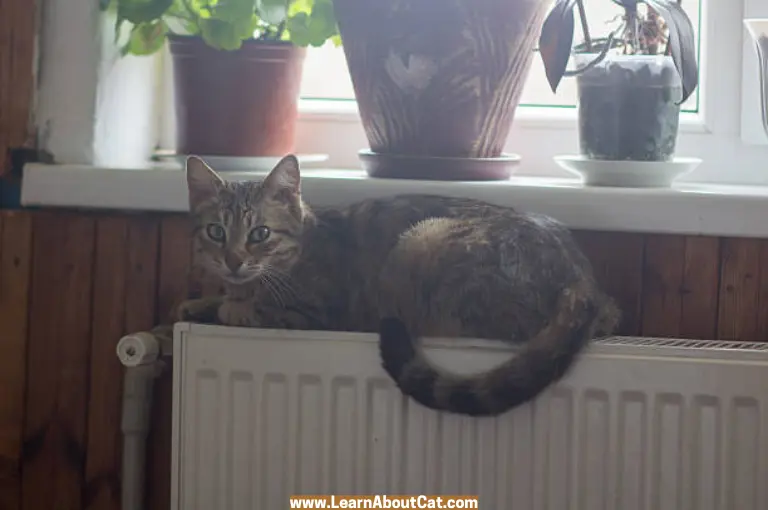
Cats may opt for air vents or other secure locations to discharge themselves when they are stressed or anxious.
It’s crucial to address the main reason why your cat keeps urinating in your air vents.
Check Out: Why Is My Cat Keeps Pooping On The Carpet or Floor?
The Problem of a Cat Peing in an Air Vent
As charming as our feline friends are, their urinary mishaps can create a host of issues. The odor is not only unpleasant but also challenging to eliminate.
Moreover, the unsanitary conditions can lead to health hazards for both the cat and the human inhabitants of the household. The potential damage to the vent system itself is yet another concern that needs addressing.
How to a Stop Cat from Peeing in Vents?
Cats are fascinating animals, and sadly, one of their most puzzling habits is urinating in air vents. If you don’t take this issue into your own hands immediately, it could turn into a nasty and unpleasant situation that could affect your home.
So, to prevent your cats from doing so I’ve provided the following best practices to prevent this behavior and maintain a pleasant aroma in your residence:
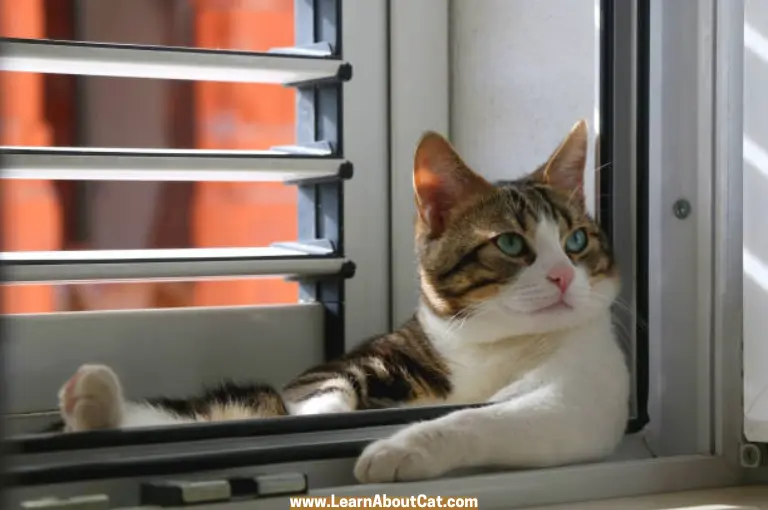
Recognize Cat Behavior
Learning why cats pee in the air vent is the first step in stopping them from doing it. It might be brought on by tension, worry, territory marking, or underlying medical conditions, all these reasons call for different preventative measures.
Keep the Area Unpleasant
Cover the vent with aluminum wrap or tape or place any barrier to make the air vent less appealing to cats. To prevent cats from leaving peeing in the air vent, you can also apply repellent perfumes like lemon or lavender.
Give them Positive Training
Another crucial step in keeping your cat from urinating in the air vents is teaching them to utilize the litter tray. When they utilize it properly, reward them positively, and keep in mind their litter tray is always available and tidy.
Lower Stress Levels
Try soothing medicines like Rescue Remedy to lower your cat’s distress and recover their sense of safety and security if they are urinating in air vents due to stress.
Make Litter Tray Accessible
Last but not least, keep in mind your cat has access to a litter tray so they can relieve themselves in it rather than the air vent.
How Do You Get Cat Pee Out of an Air Vent?
You might be thinking about how to wipe your air vent when your cat urinates there. We’ve covered everything for you, so don’t panic! You can quickly wipe your air vent by following these easy instructions.
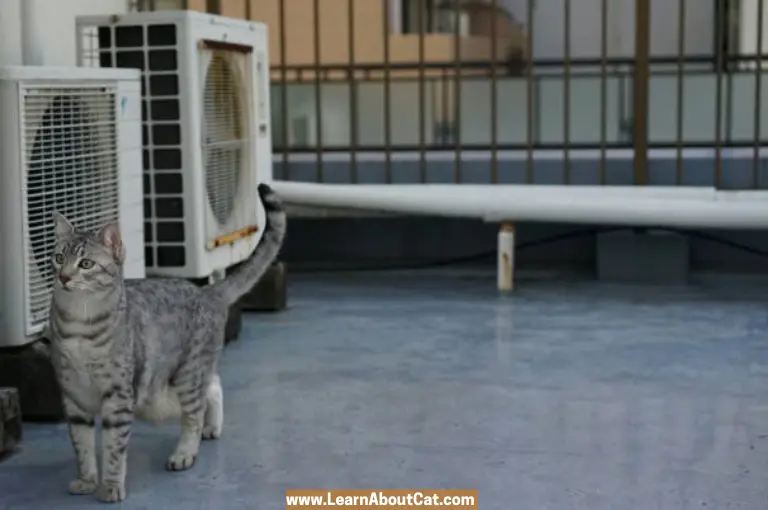
Step 1
If the air vent isn’t switched off, switch off the heating and air ventilation. Uninstall the air vent by unscrewing it. Cover the tip of a broom with a paper towel stack that is thickly layered. Attach an elastic band on top to keep them in position.
Step 2
Wipe up the cat pee by shoving the broom far enough to reach the air vent. Add more paper towels if they’re required to clean all of the mess. One spoonful of baking soda should be poured into the air vent.
Step 3
In a sprayer, combine 3/4 cup of 3 % hydrogen peroxide with 1 teaspoon of detergent. Unless the bottle is nearly empty, pour it into the air vent. Let all of these components take 2-3 hours to settle. If extra sodium bicarbonate, hydrogen peroxide, and dishwashing solution are required, continue the process after this time.
Step 4
Take out the used paper towels from the broom. Wipe all the cleaning solutions through your air vent by wrapping the broom in other tidy layers of paper towels secured tight with elastic bands. Then, apply a fresh layer of paper towels that have been soaked with ice water.
Step 5
Before putting on the ventilation system once more, change any filters that might have absorbed pee and keep in mind they are properly installed.
Step 6
Use wet paper cloths to clean the area. Let the place dry naturally for almost 1 hour. Deep in the vent, spray an odor eliminator for cats. Put the vent lid back in its position.
How Do You Get the Smell Out of Air Vents?
Although having a furry friend can be a wonderful experience, it may also result in some unpleasant odors in your house. Don’t lose hope if cat odors are seeping down your air vents. To remove these smells, you may perform the following actions:

- The vent should first be cleaned of any obvious urine stains. If there is any residual, clean it up with a moist towel and a detergent.
- It’s time to address the scent after the vent has been cleaned. Sodium bicarbonate, vinegar, and water are combined to make a cleanser that can be applied directly in the air vent.
- Allow it to settle down for ten to fifteen minutes before removing it with a fresh cloth.
- Using an enzyme cleanser made especially for cat smell. Pet scents are broken down and neutralized by these cleansers, which also leave your air vents spotless and fresh.
- If the urine odors in your air vents are still bothering you, try to use an air purifier or odor remover designed to combat pet odors.
- Use citrus fragrances to remove the odor and deter your cat from urinating in your vents Citrus fragrances and other organic cat repellents can prevent your cat from marking air vents with urine for its entire life.
These items will assist in eliminating any lingering odors without the need for abrasive cleansers or detergents.
Find Out: How to Make a DIY Cat Diaper? [Easy Guide]
What to Put Over Vents to Prevent Cat from Peeing?
If your cat continues to pee in the air vent you might be thinking of stopping her from doing so. Try these tried-and-true techniques that will stop your cat from peeing in the air vent:
Vent covers
The most effective approach to avoid this problem is using pet-proof vent coverings. These coverings are constructed from durable plastic and are available in a range of sizes to fit the majority of common air vents. They are simple to install and serve as a strong barrier to prevent cats from getting into the air vents.
Place some furnishing
Another alternative is to place a furniture item or other material, such as a cabinet or bookshelf, to restrict access to the air vent. Cats won’t be able to easily enter the vent by doing so, which might hinder them from urinating in it.
Put mesh covers
Vent covers frequently come in the form of mesh shields. They are simple to install and may be taken down or changed as necessary. Also, they are readily accessible and reasonably priced. Before purchasing one, it’s crucial to keep in mind that they might not be as successful in preventing the cats from peeing in the vents as pet-proof vent coverings.
Cat repellent sprays
Put some cat repellant in or near the air vent as an alternative. Citrus, mustard, and garlic are a few natural cat deterrents. On Amazon, you may also discover several affordable cat deterrents.
Place double-sided tape
Another fantastic choice is to wrap the sides of the vent using double-edged tape. Your cat may become irritated by the adhesive feeling that the tape left on its paws and body. They won’t likely visit the air vent again after the first or second time.
Wrap aluminum foil
A fascinating fact about aluminum foil is that cats dislike it. They tremble at the sound of the tin foil and will stay away from the vent if you wrap it around the vent.
Metal/plastic covers
The vent can be covered with metallic or plastic coverings, which are more durable options, to keep cats away from it. If maintained properly, these sorts of coverings are more robust than mesh shields and may last for several years.
Frequently Asked Questions
Is it bad to breathe in a cat urine smell?
Cat urine has a strong ammonia odor, which irritates the airways. If you inhale too much urine, you may feel like your lungs are burning. You may feel dizzy and weak when exposed to higher or ongoing levels of ammonia. Ammonia inhalation in excess irritates the skin and eyes. It also weakens the immune system and causes asthma and other medical conditions like migraines.
Can cat pee linger in the air?
Yes, cat urine can linger in the air because it contains uric acid, which could create a potent lasting odor if not wiped immediately. Uric acid can remain for months in carpeting, clothing, and furnishings, where the cat has peed. Even though sodium bicarbonate, vinegar, and detergent may temporarily mask the odors, a moist day can trigger the uric acid to precipitate, bringing back the famed “cat stink.”
Can you pay someone to clean out your air vent?
Yes, you can pay professional air duct cleaners and they’ll clean your air vents with cutting-edge cleaning tools and provide professional services. You will be spending more if you purchase the required specialized equipment, such as a powerful hoover and rotating brushes, than if you hire a specialist to do this job.
Final Words
Your cat likely marked its domain by urinating in your air vent. It’s also likely that your cat has some medical problems.
To deter your cat from urinating into the vent, try covering the edges with aluminum foil. Another great approach is to wrap the sides with double-edged tape. Your cat will become irritated by the adhesive feeling of the sellotape. You can also cover the vent openings with plastic, mesh, or metal coverings.
Cat urine odors can be difficult to remove, but they aren’t required to be overpowering. By using enzymatic cleansers, ammonia, water, and vinegar solutions you can easily get rid of any lingering smells. You can maintain a clean, fresh home with perseverance and patience.
Who is Isabella?
My name is Isabella, and I am a dedicated and knowledgeable cat enthusiast. With years of experience caring for cats and a deep love for felines, I made a mission to help other cat lovers navigate the challenges of cat ownership.

